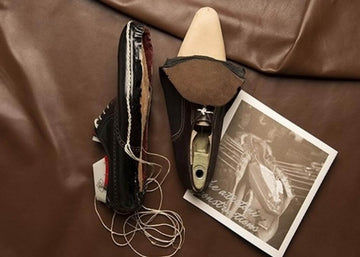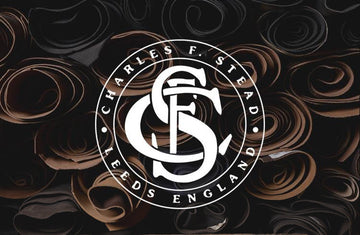The Norwegian Stitch, a timeless hand-sewn shoe-making technique, was invented by the Italians and predates the Goodyear Welt method. This intricate, over-200-year-old craft remains irreplaceable by machines, making it a hallmark of high-end custom shoes.
Only a few shoemakers master the "handmade Norwegian stitch."
Hector Maden embraces this challenging technique, not only to honor its prestigious craftsmanship but also to emphasize the essence of "handwork" and strive for continuous improvement.
The purely hand-operated Norwegian stitch preserves the authenticity of handmade shoes, offering unparalleled waterproofing due to its intricate construction:
Originally used in mountaineering shoes, the Norwegian stitch provides superior toughness, strength, and comfort, making it both unique and visually appealing while adapting to harsh environments.
Norwegian Stitch: From Hiking Boots to High-End Footwear
Mountaineering, a sport that tests human physical and psychological limits, gained popularity in Europe in the late 17th century, leading to numerous inventions like the climbing knot, trekking pole, and the Norwegian Stitch for hiking boots.
The Norwegian Stitch ensures excellent waterproofing and snowproofing by securing the upper leather, edges, and sole or midsole together, enhancing toughness, strength, and comfort. It is more protective than the Storm Welt, making it ideal for outdoor hiking boots. European military gear, developed with outdoor mountaineering products, often features this stitch. For instance, during the Battle of the British Armagh Islands, British Marine Corps soldiers wore these European outdoor mountaineering shoes in harsh terrains.

With industrialization, the Norwegian Stitch, unable to be mass-produced, became rare in mountaineering equipment. However, brands like Zamberlan, ALICO, and GRONELL still produce limited editions of mountaineering shoes featuring this technique, mainly from Italian luxury brands.
The Exclusivity of Handmade Norwegian Stitch Shoes
The Norwegian Stitch, passed down through generations, is considered the pinnacle of hand-sewing techniques in shoemaking. Brands like Berluti, Paraboot, Loake, and John Lobb continue to showcase this craft, while others like Ferragamo and Louis Vuitton occasionally explore it.

Most classic shoemaking techniques have been replaced by machines, offering better aesthetics and efficiency. However, the Norwegian Stitch has remained a hand-sewn craft for over 200 years, handed down from master to apprentice, with no machine capable of replicating it.
The meticulous and time-consuming nature of Norwegian Stitch makes it rare and impossible to mass-produce. Despite its renown, it is seldom seen and practiced by few. Finding a genuine Norwegian-stitched shoe is a coveted achievement for enthusiasts.
The Norwegian Stitch involves intricate techniques, including four stitching methods from the midsole to the upper: one-word style, triangular style, two-line style, and chain style. The chain style, the most complex, not only enhances the shoe's appearance but also strengthens its structure.
Crafting a Pair of Genuine Norwegian Stitch Shoes
Reserved for custom or top-tier shoes, the Norwegian Stitch's complexity and labor-intensiveness limit its production to skilled artisans. A pair of pure Norwegian hand-stitched shoes requires numerous processes, particularly the unique hand-stitching stage, which is a cherished tradition in the industry. Hector Maden proudly demonstrates the technique's difficulty and practicality.
The British GOATS wax thread is used, with needles interlocking from the midsole to the leather surface, requiring exceptional skill. Hand-sewing Norwegian Stitch takes at least 7 hours, an irreplaceable task for machines.

First, unlike Goodyear, the Norwegian-stitched upper is inverted, hand-stitched with the first layer of the outsole, completely isolating the inside of the shoe from the outside.
Second, the excess part of the upper is cut off by hand, requiring precision.
Third, the second leather bottom is sewn with the outer outsole, creating a robust bond among the midsole, upper, and outsoles.

The distinctive and intricate chain stitch adds a unique style to the shoe. After polishing and waxing, Norwegian-stitched shoes with three stitches showcase pure handmade craftsmanship, high-quality leather, and an antique finish. As a top craft in handmade shoes, Norwegian Stitch is rare and highly sought after by enthusiasts. Even if found, the price is exceptionally high. For example, in 2015, Louis Vuitton launched semi-Norwegian Stitch formal men's leather shoes priced at nearly $2,000.





